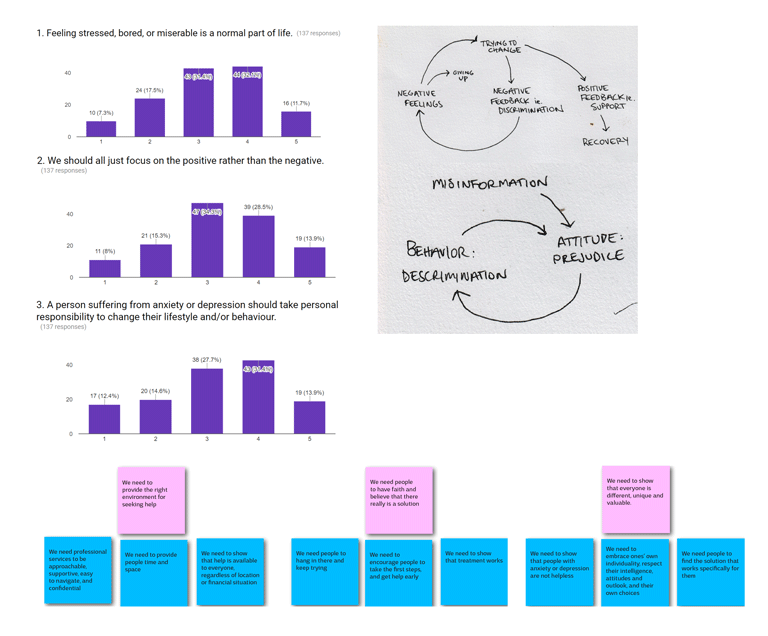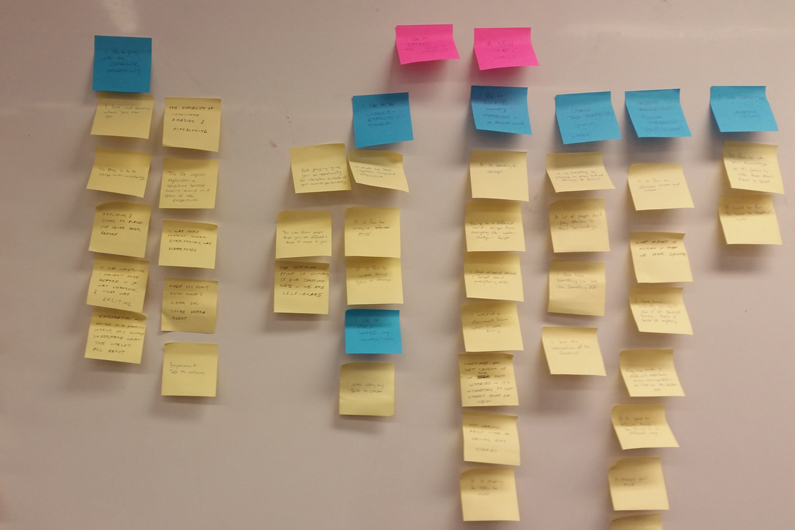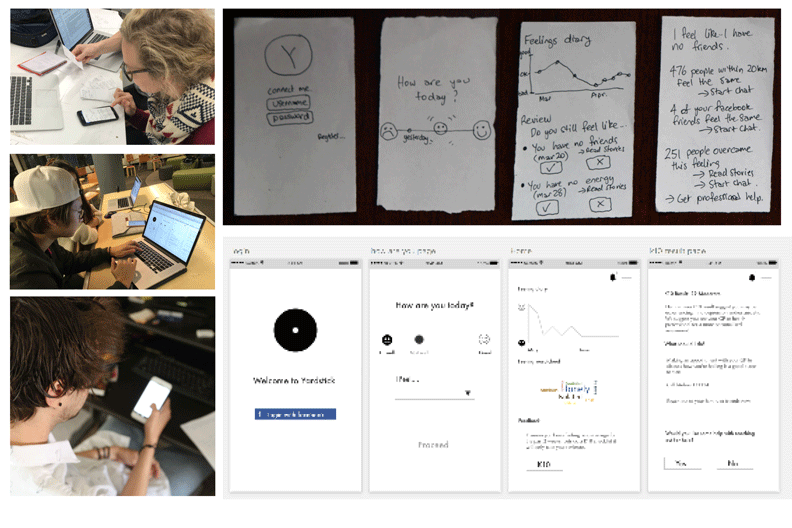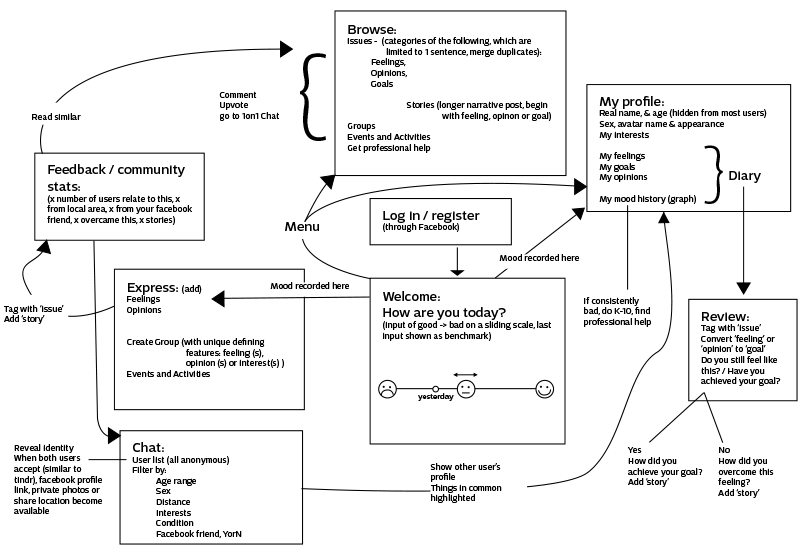THE BRIEF
Design a technological solution to de-stigmatise depression and anxiety. The project was
completed as part of the Master of Interaction Design and Electronic Arts course at University of
Sydney. Research,
analysis and ideation was conducted individually at first, before forming a team with Georgia Saich
and
Michael Huang for further research, discussion, ideation, iterative prototyping and user testing.

THE PROBLEM
Unlike illnesses with obvious physical symptoms, mental health issues are ‘invisible’ to many. The
stigma surrounding depression and anxiety amounts to a lack of empathy, knowledge and understanding.
Many assume that one’s behaviours and mindset are within their control to change, however for some
sufferers this does not reflect their lived experience. It is these attitudes that continue to make
them feel inadequate and prevent them from seeking help when they really need it.
We found that youth are the least likely to seek professional help. A major barrier is not knowing
the
difference between everyday feelings, and a problem requiring intervention. There may also be a lack
of
faith in support services. Our solution aims to address these key findings.
UX RESEARCH
Key to the design project was developing a deep understanding of the problem, requiring qualitative
data analysis.
|
|
Online survey with over 100 responses |
|
|
3 in-depth aural interviews, including a professional psychologist |
|
|
Online forums and social media such as Reddit and Twitter |
|
|
Reports and initiatives by beyondblue, ReachOut and Black Dog Institute |
|
|
Interviews and discussion in relevant All in the Mind RN podcasts |
|
|
Analysis of YikYak – a local anonymous chatting app that became very popular but
was shut down due to bullying and harassment.
|
DATA ANALYSIS AND DESIGN THINKING
|
|
Brainstorming |
|
|
Affinity diagramming |
|
|
‘5 whys’ root-cause identification technique |


THE SOLUTION
Target audience
|
|
Young people, as research has shown they are least likely to seek professional
help. |
Focus areas
|
|
Self-stigma (feeling that one does not need help, or cannot be helped) |
|
|
Perceived stigma (feeling that others hold more strongly stigmatising views than
they actually do) |
Key user need addressed
|
|
A measuring stick to assess one’s own mental health. A major cause of stigma is due to not
being
able to
distinguish ‘normal’ negative emotions from those that have become a mental health problem
requiring
help.
|
Features
|
|
Day-to-day input of mood on a sliding scale, compared with yesterday |
|
|
Log thoughts and feelings for personalised advice and stories from similar
sufferers |
|
|
Review of progress and coping strategies |
|
|
Anonomised chat with matched peers from local area or similar social circles |
|
|
Personalised recommendation of when and where to seek professional help if
required |
Aims
|
|
To provide a threshold or ‘yardstick’ to aid recognition of when to seek professional help –
monitoring
mood over time can determine if the user is feeling consistently or more often bad than
good.
|
|
|
To reveal commonality, emphasising the sufferer is not alone – feedback is provided through
statistics
of similar thoughts or emotions experienced by similar individuals
|
|
|
Find relevant advice through relatable stories |
|
|
Encourage helpful and supportive communities |
|
|
Provide an accessible and unintimidating platform for seeking help, especially for those who
might feel
paralysed to take the first step or talk with someone face-to-face.
|
|
|
Provide opportunities to re-frame negatives into positives – for example, stress into
motivation
to
achieve.
|
Issue avoidance measures
|
|
Anonymity amongst users, but requires initial sign-in through Facebook to verify
identity |
|
|
Reputation scores are accumulated through ‘up votes’ of useful advice, assisting in the
matching
algorithm
|
|
|
Trained moderators help identify potentially risky interactions |
|
|
Opportunity to report inappropriate advice and to block users |
Process and Evaluation
|
|
Paper prototypes and wireframes |
|
|
User-flows |
|
|
Persona walkthroughs |
|
|
User testing – think aloud and focus group discussion |


REFERENCES
|
|
beyondblue Information Paper: Stigma and discrimination associated with depression
and anxiety
August
2015 |
|
|
Corrigan, P.W. (2011). Strategic stigma change (SSC): five principles for social
marketing campaigns
to
reduce stigma. Psychiatric services, 62 (8), 824 – 826. |
|
|
Reavley, N.J. & Jorm, A.F. (2011). Stigmatizing attitudes towards people with mental
disorders:
findings
from an Australian National Survey on Mental Health Literacy and Stigma. Australian
and New Zealand
Journal of Psychiatry, 45, 1086 – 1093. |






